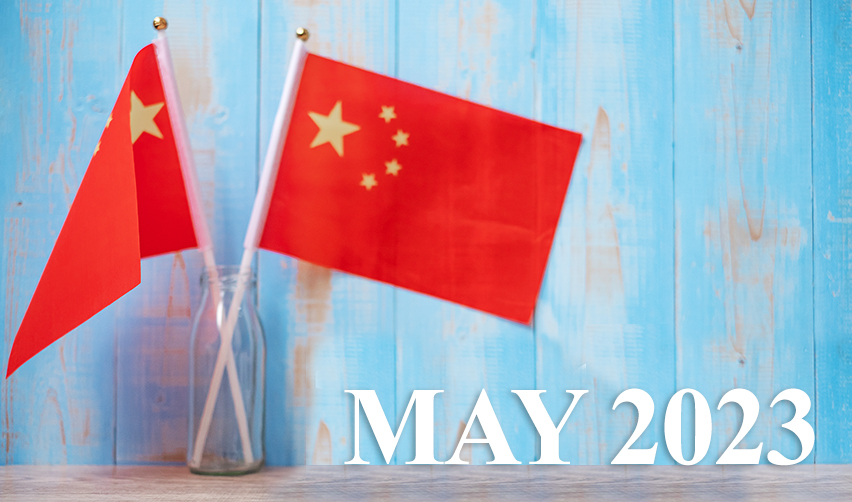The Department of State releases monthly Visa Bulletins that inform EB-5 investors from backlogged countries whether they can proceed with the immigration process.
In the newly-released May 2023 Visa Bulletin, the Department of State indicates that the final action date for Chinese EB-5 investors has moved forward to September 8, 2015. This represents a two-month change in the final action date, which was set at July 8, 2015, in the previous Visa Bulletin.
While both Chinese and Indian investors still face a significant backlog of EB-5 applications, any progress in the cutoff dates is welcome. At the same time, new EB-5 investors from China and India do not need to experience the additional waiting times caused by the limited supply of EB-5 visas. Rather, they can “skip the line” and avoid these delays by investing in a rural TEA project.
Analyzing the May 2023 Visa Bulletin
Avoiding Visa Backlog Delays Through Rural TEA Projects
Benefits of the EB-5 Visa for Chinese and Indian Nationals
Analyzing the May 2023 Visa Bulletin
As mentioned, the new final action date for Chinese investors is now September 8, 2015. This means that all Chinese EB-5 applicants who filed Form I-526E before this date can receive U.S. Green Cards following approval of the I-526E petition.
India, the second-largest EB-5 market, also has a backlog of pending applications. After the country’s backlog was significantly reduced by lower demand during the COVID-19 pandemic, India once again entered visa retrogression in the October 2022 Visa Bulletin. This country’s final action date is June 1, 2018.
The pool of H-1B, E-2, and other specialized workers in the United States holds a significant number of Indian professionals. Given the massive layoffs in the technology sector and other industries, many Indian nationals are now considering investing in a Green Card through the EB-5 program.
The monthly Visa Bulletins also feature a date for filing for EB-5 investors. This determines when investors from backlogged countries can apply for their Green Cards following I-526E approval. The dates for filing for both China and India remain the same in the May 2023 Visa Bulletin: January 1, 2016, and December 8, 2019, respectively.
Avoiding Visa Backlog Delays Through Rural TEA Projects
While many Indian and Chinese EB-5 investors with pending applications experience additional delays, new investors can avoid these unreasonable wait times. Now, EB-5 investors who invest in a targeted employment area (TEA) project are eligible for a set-aside visa.
In essence, this provision allows Chinese and Indian investors in TEA projects to “skip the line,” as it were, and become eligible for Green Cards after receiving I-526E approval. These investors will be able to get their Green Cards regardless of their country’s backlog of pending EB-5 applications. They will not be subject to final action dates or dates for filing.
Still, there is only a limited number of set-aside visas available each year.
While high-unemployment TEA projects are available, rural TEA projects get a significant 20% of the yearly EB-5 visa pool. This makes rural projects the safest category for Chinese and Indian EB-5 investors.
We invite you to watch our interview with Siddharth, an investment banker from India who invested in one of EB5AN’s projects. He discusses why the rural TEA category was the best option.
Benefits of the EB-5 Visa for Chinese and Indian Nationals
The EB-5 visa program offers a range of benefits specifically for Chinese and Indian investors seeking U.S. permanent residency. Unlike other employment-based visa categories such as H-1B or L-1, the EB-5 program does not require specific professional qualifications, work experience, or a sponsoring employer, making it a more accessible option for those who may not qualify for other visa types.
Investing in a rural project enables Chinese and Indian nationals to bypass the visa backlog and country-specific quotas that often result in long waiting periods for Green Cards. This leads to shorter processing times, allowing investors to achieve their immigration goals more efficiently.
One of the most significant advantages of the EB-5 program for Chinese and Indian families is the opportunity it provides for their children. Access to the U.S. educational system, including world-renowned universities, can vastly improve their prospects. Additionally, children of EB-5 investors may qualify for in-state tuition fees, which are considerably lower than those for international students. Families can also enjoy a higher quality of life, increased safety, and access to advanced healthcare services in the United States.
By obtaining permanent residency through the EB-5 program, Chinese and Indian investors can secure a better future for themselves and their families, while also contributing to the growth and development of the U.S. economy.
For more information on the EB-5 visa, schedule a free consultation with EB5AN.










